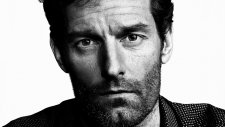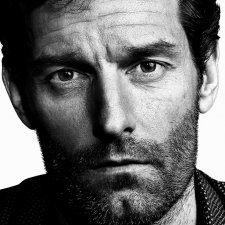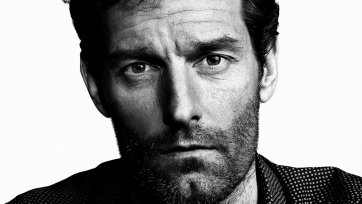- Yeah, I grew up in Queanbeyan, so very close to the Gallery here. Very lucky to grow up in Queanbeyan, it was a great, rural country town. Big sporting emphasis growing up, that community spirit, I suppose, all things that come with that. I loved my sport as a youngster growing up. And also the farm out at Burra, so I used to go there quite a bit. So, I think that was also lucky, that you don't realise when you grow up in that sort of environment how fortunate you are that you have these opportunities to maybe ride a motorbike in a paddock and do some of these things which you just totally think are relatively normal when you're nine or ten, but clearly they're not. Used to commentate to myself in races, I'm in this race, of course I was on my own in a paddock, but I used to win all these races on my own. And, I suppose I had that dream, desire to, I suppose, compete. Loved the family life, loved the way I grew up here. And, my dad had a motorbike shop and a petrol station and the motorbike shop together over the river there in Queanbeyean. And, I think, petrol and engines is never too far away from me. I love the smell of the bikes and I love sort of, I suppose, the wind in my hair. Then, I went to go-carts and then yes I when I started carting. And, I was very, very lucky that we had the go-cart track out at Fairbairn out there because, again, that was just such a, so much luck involved for me to have that bond also with your dad. So, it was great, it was so tight to go and do those sort of weekends. And, I think he gave me, I suppose, a bandwidth to make some mistakes and learn. It's like, "That's definitely not the right thing to do there." And just get that right barometer of counsel, I suppose, as a father but also having the discipline to get the results.
The ratio between mentally and physically driving a Formula One car, clearly the mind set is a huge factor. It's gotta be 70%, 80% of you getting in the car and having that focus and the level of concentration, of course, that I needed to hold this beast of a car in a very narrow window of performance for over two hours. That requires an immense amount of concentration. And then, the physical component is, of course, there as well. The G forces are very high. The heart rate is high, the adrenalin is very high, there's a cocktail of emotions going on which is extremely dramatic. In any sport, really, if you've got baggage in your head and you're not clear emotionally, you know, you're thinking about consequences and things that might happen whether it's personal of professional or whatever it is then you can leave some change on the table. So, it's an unbelievable job, obviously, to get the most out of yourself. And, I was very lucky to do it for 20 years as a professional.
Naturally in car racing there is an element of danger, of course, and we, bizarrely probably, like that, in a way. It needs to be a level of balancing that car, the speed, obviously, the risk that goes with that, and it's all managed by us. I mean, we're really in charge of the limits that we take and what is really gonna be acceptable to take, obviously corners at certain speeds and what's possible.
It's hard to get a manual and say, "How am I gonna be a top racing driver, consistently on all these difficult track around the world, in all different weather conditions and against the hardest guys in the world." So, it's very hard to read about that. Of course, you can seek a bit of counsel of guys that have been there before. For example, Sir Jackie Stewart, he's one of the biggest influences in my life. When you get counsel off those guys you can learn from scenarios and how they went about things. It's that, it's learning yourself as well. There's no better way than to go through some of these challenges yourself because if you're the tailwind through your whole profession then you don't do a great deal of learning. You need some bumps in the road. That's when you learn the most and you come out the other side. But, I never saw it as I'm from Australia, it's gonna be really, really hard. It was, clearly, but and all these sort of things you can put in your head, but you just have to get on with it because the sport won't stop in that sense. So, you gotta make of it what you will. And then, someone will do it so it might as well be you.







